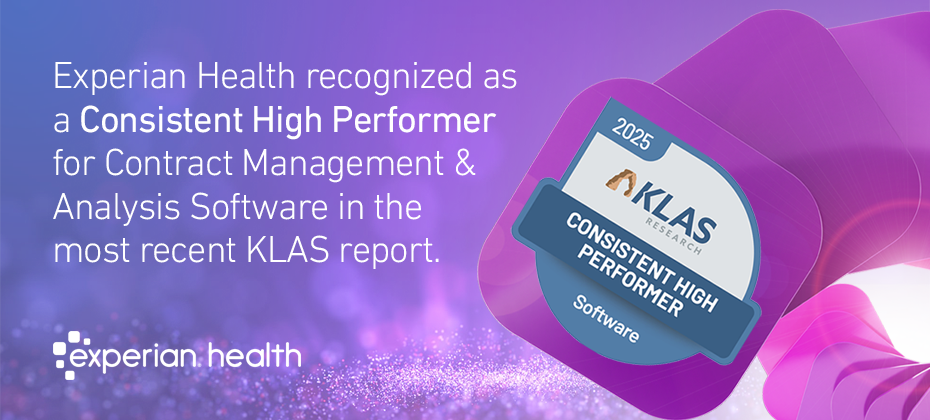
Since 2000, US hospitals have provided nearly $745 billion in uncompensated care. Many contributing factors lead to revenue losses. However, incorrect or missing patient insurance information is often a top culprit. Providers don’t have a complete picture of a patient’s coverage when active benefits are incomplete or unknown. The result? Insurance denials, time wasted on resubmissions and increased bad debt.
In today’s complicated healthcare environment, disjointed insurance verification processes often make it challenging for providers to find hidden coverage. Changing payer requirements and ever-evolving regulatory changes also make checking active coverage tricky. To protect profits, organizations must remain vigilant when finding all available patient insurance coverage to pay for the cost of care. Adopting technology, like automated coverage discovery solutions, can help providers accurately and quickly determine what insurance a patient has, if any, and what it covers.
This article takes a deeper dive into some common insurance discovery challenges providers face and how Experian Health’s Coverage Discovery® helps streamline the process and reduce revenue losses.
Why insurance discovery matters
A healthcare organization’s financial performance hinges on accurate insurance billing and claims processing. Insurance discovery helps employers find missing coverage quickly and maximize reimbursement. However, providers often don’t have the correct insurance information. Missing coverage is cited as a top reason for claim denials for nearly 20% of providers, according to data from Experian Health’s State of Claims 2024 survey. Patients may enroll in a new employer plan, move to a new state, switch jobs or have other factors affecting their coverage. Changes can happen at any stage in the patient journey. In some cases, patients may not be aware of what’s changed. Evolving payer policies also result in altered or expired benefits, further complicating matters.
Common challenges in insurance coverage identification
Insurance coverage identification is a necessary part of revenue cycle management, but isn’t always a streamlined process. Some of the common challenges providers face during coverage discovery include:
Incomplete insurance information
Missing or outdated insurance information affects all aspects of the revenue cycle, from claims processing to bill payment. However, it’s common for patients not to submit their complete insurance information to providers or forget to update paperwork after initial registration. Patients often don’t know their coverage status or are unsure how much of their healthcare costs are paid for by insurance – especially Medicare beneficiaries. When providers fail to spot incomplete or inaccurate patient insurance information, it leads to coverage gaps, claims denials and unpaid medical bills.
Heavy manual workload for administrative staff
With healthcare organizations already feeling the squeeze of continued staffing shortages and rising operational costs, providers can’t afford to waste valuable staff time. Unfortunately, manual insurance coverage identification processes are typically time-consuming and error-prone. Phoning payers, logging into multiple portals and manually entering patient data places added burdens on staff. In many cases, providers only learn that a patient’s active benefits have changed after the claim has been submitted. Correcting errors takes time, with 43% of providers reporting that they need at least 10 extra minutes to check eligibility after an incomplete initial check.
Changing payer requirements and new regulations
During coverage discovery, providers must consider payer requirements and regulations. However, it’s not always easy for staff to stay on top of ever-evolving payer requirements and new healthcare industry regulations. During coverage discovery, providers often manually gather information from multiple databases and may miss important updates or have incomplete or inaccurate coverage information.
How insurance discovery typically works
When a patient seeks care, providers use health insurance discovery to check whether a patient has active insurance and confirm coverage details, like plan type and payer name. The coverage discovery process helps providers know if a payer will cover planned services and ensures the cost of care is billed to the correct payer. It’s also common for a patient to have more than one active plan. So coverage discovery typically involves cross-checking payer databases to verify that no coverage is missed. In cases where a patient doesn’t have insurance coverage, providers can use insurance discovery to check a patient’s Medicaid eligibility and charity support options.
Successful revenue recovery starts with a patient engagement strategy that simplifies the steps to reimbursement at every patient touchpoint. A three-pronged approach can increase the likelihood of payment by identifying the opportunities to check for coverage before the patient comes in for care, at the time of service, as well as after care.
1. Pre-service insurance coverage checks
Verifying and tracking the patient’s insurance status before they come in for care means their financial obligations will be clear from the start. Advanced knowledge makes it much easier for patients to plan – and pay – their medical bills. An automated coverage identification solution such as Experian Health’s Coverage Discovery solution can scan patient information as soon as they schedule an appointment to find any previously unknown coverage, using multiple proprietary databases and historical information.
2.Identifying coverage at the point of care
When the patient receives their treatment, Coverage Discovery can check for any billable commercial and government coverage that may have been missed during pre-service. Integration with eCare NEXT® and HIS/PMS platforms provides on-demand insurance coverage scans at the time of service. Providers should also give patients opportunities to pay for care at this point too, to avoid the need to chase for payments later. A simple and quick payment experience can reduce the risk of additional A/R days and collections agency fees.
3. Post-service checks for unidentified coverage
Finally, for any accounts that haven’t been settled at the point of care, providers should run further coverage checks before determining whether to send statements and payment reminders to the patient, write the amount off as bad debt, or engage a collections agency. Coverage Discovery can detect any discrepancies that could lead to denied claims. This solution scans patient balances in A/R for active insurance coverage 30, 60, and 90 days post-service. It also offers weighted confidence scores so that accounts are reclassified and rebilled appropriately. Automated scrubbing can eliminate manual processes so staff can use their time more efficiently.
Coverage Discovery also does a final scrub scan on patient balances before sending accounts to collections, or writing off to charity or bad debt.
These steps will help plug revenue leaks at every stage of the patient journey, improving cash flow, reducing the risk of bad debt, and creating more satisfying patient experiences.
How insurance Coverage Discovery benefits healthcare providers
In 2023, Experian Health’s Coverage Discovery successfully tracked down previously unknown billable coverage in nearly one-third of patient accounts, resulting in more than $25 million in found coverage.
Providers seeking to maximize revenue can benefit from automating the insurance discovery process with Coverage Discovery. Here’s how:
Quickly find missing insurance coverage in real-time
Experian Health’s Coverage Discovery helps providers catch outdated insurance information and locate missing coverage early. This helps ensure changes to a patient’s benefits are caught before a claim is submitted. With real-time access to multiple proprietary databases – like employer information, historical search information, registration history and demographic validation – providers can proactively identify billable Medicare, Medicaid and private insurance options. Needing only minimal patient details for a search, Coverage Discovery instantly locates additional primary, secondary and tertiary insurance.
Eases administration burden on busy staff
Heavily manual processes and outdated insurance information cost providers time and money during insurance discovery and throughout the revenue cycle. Coverage Discovery streamlines discovery behind the scenes and saves staff time by running continuous checks throughout the patient journey. When staff isn’t bogged down with tedious insurance discovery processes, they can focus on more complex tasks and providing quality patient care.
Reduces the likelihood of claims denials
Claim errors, such as the wrong payer information or coverage information, often result in delays, denials or bad debt. However, when insurance discovery is automated with a solution like Coverage Discovery, the process is faster and no longer relies on error-prone manual tasks. Providers benefit from cleaner claims, a more streamlined claims submission process and quicker payer reimbursements.
Choosing the right automated insurance coverage discovery solution
Experian Health’s comprehensive coverage identification solution, Coverage Discovery, helps providers make the reimbursement process easier to navigate and reduces the burden on front and back-end staff. This automated solution is capable of operating at every touchpoint of the patient journey, from registration to collections.
Learn more about how automated health insurance discovery helps providers reduce claim denials, improve cash flow and deliver better patient experiences.


